Examples of Orthodontic Appliances
 Metal Braces Metal Braces
- Metal braces are used to align the teeth using metal brackets and archwires.
- Colored modules can be added for the fashion conscious patient!
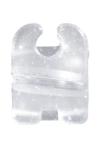 Ceramic Braces Ceramic Braces
- Ceramic braces are less visible than metal braces.
- They are slightly larger than metal braces which may make oral hygiene more difficult.
- They are also more brittle than metal braces; therefore, they are used on upper front teeth and rarely on lower teeth.
 Self-Ligating Braces Self-Ligating Braces
- Self-ligating braces have small clips incorporated into the bracket which attaches the archwire to the braces.
-
They are more hygenic than other types of braces because they do not need an elastic module to attach the archwire to the braces.
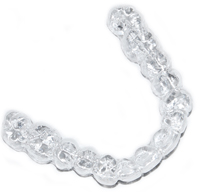 Simpli5 Simpli5
- Simpli5 is the invisible way to straighten your teeth without braces. A series of clear, removable aligners are used to straighten your teeth without metal wires or brackets. Each aligner is worn for about two weeks and is removed only to eat, drink, brush, and floss.
- Simpli5 is not suitable for every type of bite problem. Generally, this works for mild to moderate crowding or spacing.
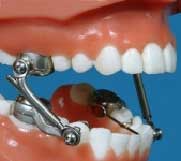 Herbst Appliance Herbst Appliance
- A herbst appliance is a "functional appliance" that repositions teeth and encourages favorable forward growth of the lower jaw.
- It reduces "overbite" discrepancies through a combination of moving the lower jaw forward and upper teeth backward.
- These appliances work best in younger patients who are still actively growing.
- They are usually worn for 12 months.
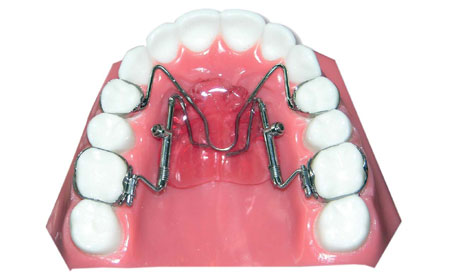 Distal Jet Appliance Distal Jet Appliance
- The Distal Jet is an appliance that is used to correct the bite by moving the upper back teeth backwards. This will help create enough room for your crowded or protruding teeth.
- This appliance is generally used for a period of 4-6 months.
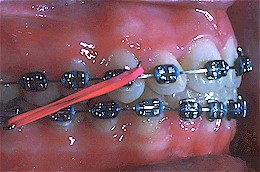 Elastics Elastics
- Elastics are small rubber bands that patients wear between different sets of upper and lower teeth
- They move teeth in a desired direction.
- For elastics to be effective, they need to be worn full-time day and night.
- Patient compliance in wearing these elastics is vitally important in both the success of treatment and the length of time in braces.
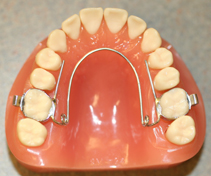 W-Arch W-Arch
- The W-arch is an expansion appliance used to widen the upper teeth.
- This appliance will guide your natural growth and widen your upper jaw.
- This will create enough room for your crowded teeth and make sure the upper and lower teeth fit together properly.
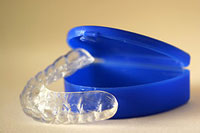 Retainers Retainers
- Following completion of orthodontic treatment, teeth must be maintained in their newly corrected position. Teeth will always move back towards their original position, to some degree.
- Most orthodontists, including Dr. Kania, advise lengthy or often lifetime retention of the completed orthodontic result. This can be achieved with either removable or fixed retainers.
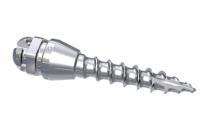 Temporary Anchorage Devices (TADS) Temporary Anchorage Devices (TADS)
- A TAD is a miniature titanium screw that is placed in the mouth temporarily to serve as an anchor for moving specific teeth in a more controlled and predictable fashion.
- TAD's eliminate the need for certain cumbersome appliances (e.g., headgear) and allow us to treat certain cases better and faster than ever before. TADs are placed temporarily, and they will reduce treatment time.
- TADs are designed specifically for orthodontists. They are different than the other types of dental implants that are used by general dentists, periodontists, and oral surgeons.
- TADs do not involve invasive surgery so patient discomfort is limited. In most cases, a specially formulated topical anesthetic is all that is needed to place the TAD into the bone.
|